Dusk Diver 2: A rocky start to an otherwise great game
- Developer: WANIN International
- Publisher: Justdan International, Idea Factory
- Release date: 30th August 2022
- Genre: Action-adventure, RPG, Fighting game
- Platforms: PlayStation 4/5, Nintendo Switch, Windows PC
- Reviewed on: PlayStation 5
- Game Supplied by: Publisher
Dusk Diver 2 Review
The original Dusk Diver garnered an almost cult-like following of fans, even if critical reception was slightly lukewarm. I missed out on the original but having received a copy of Dusk Diver 2 to review, ploughed into the follow-up game with a huge amount of anticipation.
Dusk Diver 2 picks up immediately from the end of the first game and places the player into a world with a cast of characters who already know each other well. Although Dusk Diver 2 can be enjoyed without any prior knowledge, this isn’t a standalone experience. If you haven’t played the first game you won’t understand the significance of the references made by the characters. It’s not so high-brow that you can’t figure out what’s going on, it’s just that the nuances of the conversations were lost. For example, early on the team talks about a character you haven’t met who turned out to be a bad guy. Previous players no doubt would feel right at home, but to new players like me, I felt like I was missing out. Other games have tackled this problem better, with in-depth story synopses or lore that can fill you in on the background, but you have to play Dusk Diver 2 for a while before the synopsis of the previous game is even made available.
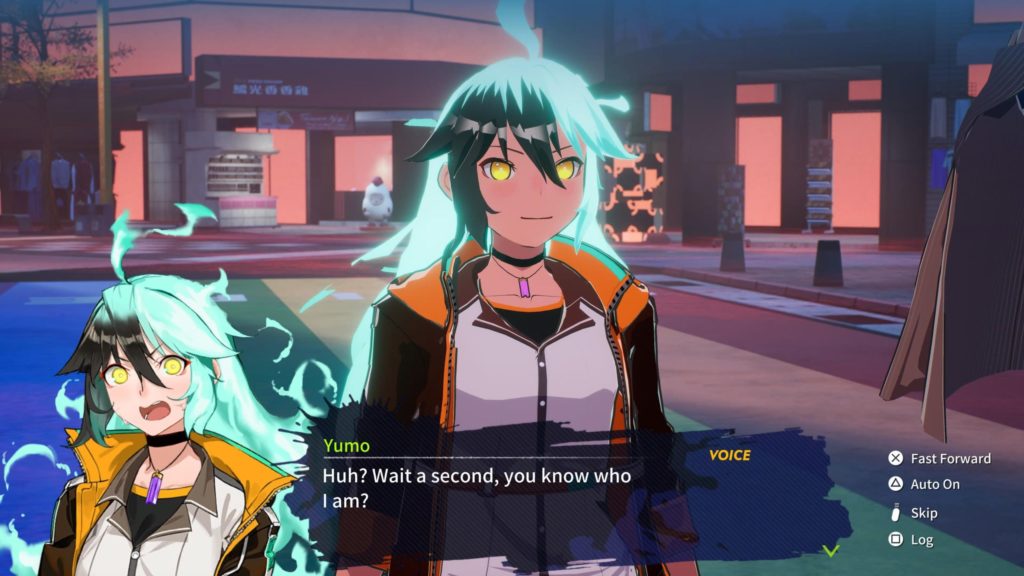
Just as I was trying to get my head around the game world and characters, Dusk Diver 2 threw another curve ball, by throwing all of the game’s mechanics at me straight away with text-heavy tutorials. This is one of my biggest pet peeves with JRPGs; You are often just trying to understand and try what was explained in the previous tutorial when two or three more have been thrust upon you. In the first two hours my head was spinning, with who, what, why, when, and how! Mercifully, the game eventually stops throwing systems at you and calms down. It’s only when it finally lets you relax, enjoy, experiment, and just get on with it, that the game begins to shine.
Visually the game pops with a wonderful mix of bright, sharp colours – not just in the character models, but in the settings and the world you explore. The dungeons themselves are uninspiring and devoid of defining features (so much so, that it’s actually quite easy to get lost as everything looks the same), but despite the lack of detail, they are very colourful, simple, and sharp on the eye. In contrast, the hub world, which is a stylised district called Ximending, had a wonderful anime-meets-real-world aesthetic to it. Billboards show the latest TV shows high above you on a big screen, amidst the clean streets full of restaurants, shops, collectables and people to find and explore. Going in and out of shops and restaurants was enjoyable, as there were no irritating loading times which often plague open-world games. This, along with the real-life pictures of the food to eat and drink, whetted my appetite for wandering aimlessly around the hub world soaking it all in and trying all of the foods!
Completionists rejoice! The hub world also has collectables to find, sub-stories to unlock, places to upgrade, and even enemies to battle, although these battles weren’t what constituted the main dungeons. The dungeons are found and entered through rifts in the hub world, and once they have been entered, you can not return until you have finished them. You can just quit out, but you would lose your progress if you did so.
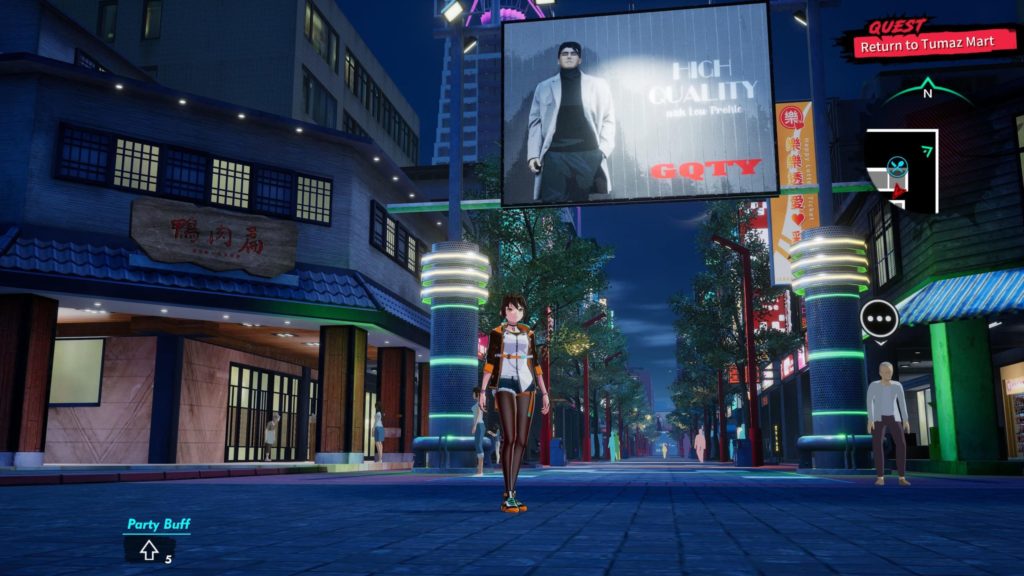
Clearing dungeons will let the team collect items and resources to take back to the hub world to sell, buy or make into items to become stronger. It’s a standard RPG fair, and deciding how to improve your chosen character is up to the player. However, it would be recommended to try each character first, decide which one you prefer to use and upgrade them first. Upgrades came through at a snail’s pace, so use your resources and spend your money wisely!
As well as having a colourful and well-defined world, the presentation of the game is excellent. The artwork for the character stills when they are talking is high-quality, with clear and crisply stylised fonts that make dialogue easy to read. The character models themselves, both in action and in the dialogue sections are again interesting to look at, especially the flowing locks of Yumo, in her changed state form. With the faultless performance of the game in 60fps, her bright light-blue hair flowed wonderfully around. The cut scenes were also of an excellent standard, and although not uber detailed, looked very much like a scene ripped from a high-production anime film. This quality made the experience of playing the game to push the story along very enjoyable. The team has most certainly made a very polished-looking product and it shows everywhere.
The combat aspect, like the game in general, got off to a shaky start, but once you know what the game is trying to do and have time to experiment, suddenly it clicks. You can play as any of four characters in battle and can freely swap between them mid-battle, and even mid-combo. Each character has a distinct play style. For example, one is weaker but can hit from range, while another is a slow close-range tank, and the others are balanced somewhere in between.
On the surface of it, the game looks like it’s nothing more than a button masher. There are fewer enemy types per sequence than there were in Dusk Diver, but here in Dusk Diver 2, it’s balanced by the enemies being harder to dispatch. There are no options to change the difficulty, but I only struggled at the beginning, mainly because I wasn’t playing the game well. The game allows you to target one enemy at a time, and I was doing so thinking that the best way to clear a level was to whittle the enemies down one at a time. However, what I found much more satisfying and also a much more efficient way to defeat enemies was to use crowd control methods, arranging the enemies into groups and attacking them like this.
You need to spend time with each character to become comfortable with what their moves and skill tree abilities can do, so you then start using them more effectively in battle. Each character also has abilities that have status effects like electricity that some enemy types are more susceptible to than others. Knowing an enemy’s weakness, which character has such an ability to take advantage of it, and learning how to use each character properly really made for an enjoyable time. It wasn’t long before I was on the front foot, racking up triple-digit combos, and having a great time during combat. The rewarding style of play is very similar to combat in Musou-style games like Samurai/Dynasty Warriors.
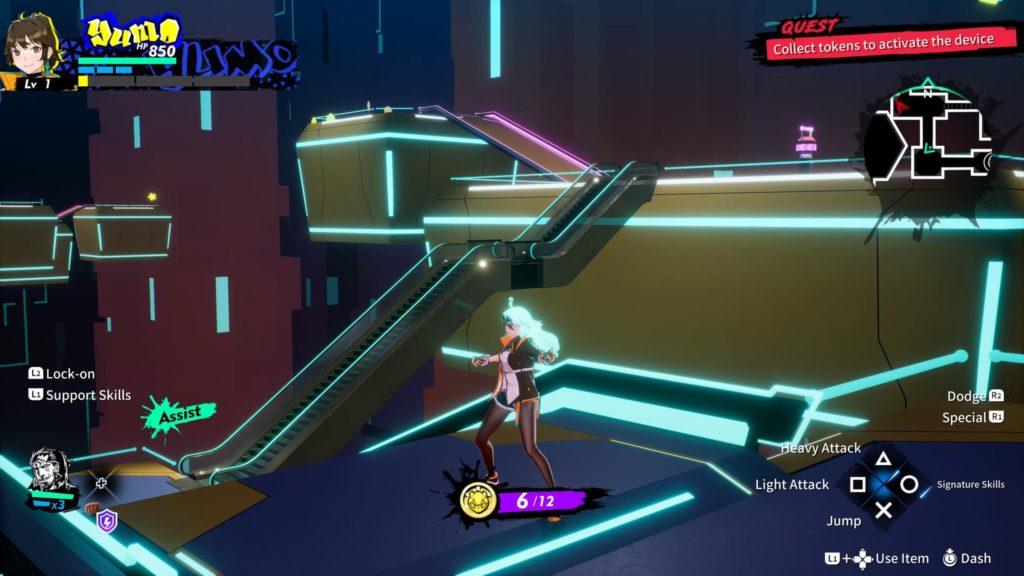
There was also a burst mode that was exciting to see as much as it was exciting to play. After a while, when a meter is filled, your player can enter burst mode, where they are more powerful for a set amount of time and can unleash a lot of damage quickly. Finding the right time to use this was key, as some enemies have a shield to break before they will take any health loss. Combining the normal light and heavy combination attacks with skill sets and burst mode, together with different play styles per character and various elemental effects, allows for much deeper tactical combat than you’d expect.
The fact that the graphics are crystal clear and that the game runs incredibly well meant that I could express how I wanted to play superbly. Enemies give clear audible and visual clues before they attack, which helped me decide my next move with much more confidence. Getting larger combos provides you with bigger rewards per encounter, which makes it a much more rewarding way to play rather than just breezing through each battle as quickly as possible.
Dusk Diver 2 really wants you to style out each moment as best you can. This is highlighted best by the awesome but simple Boss fights. The bosses themselves don’t have huge move sets, but reading what they are doing and dancing around the screen to avoid hits whilst chipping away at them had a superb flow, and it was hugely enjoyable, as this moment I recorded shows.
The only issue I had with the combat, and I don’t know if it was somehow messed up in translation, was that within the tutorials the game suggested Yumo can guard and parry by pressing circle, but this actually launched a special attack for her. The following tutorial then explains how to use special attacks by also pressing the circle button; Circle did not have two different actions for Yumo, however, the other characters could use the guard button but didn’t have a special attack. They could have added the caveat that this was character-dependent, but the character in the images was Yumo in both instances – It made it very confusing as to what was possible with each character, which added to the woes during the first couple of hours of play.
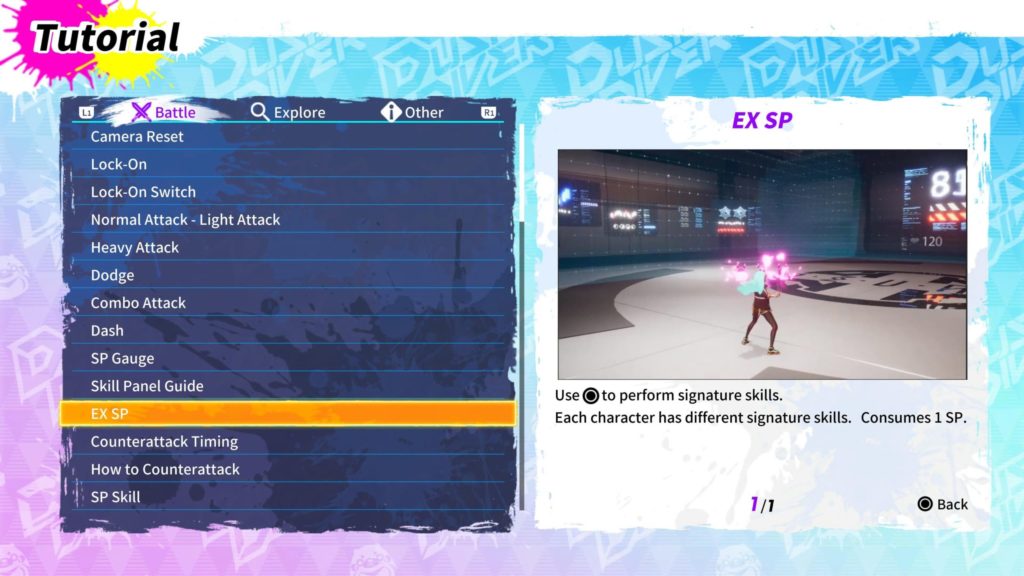
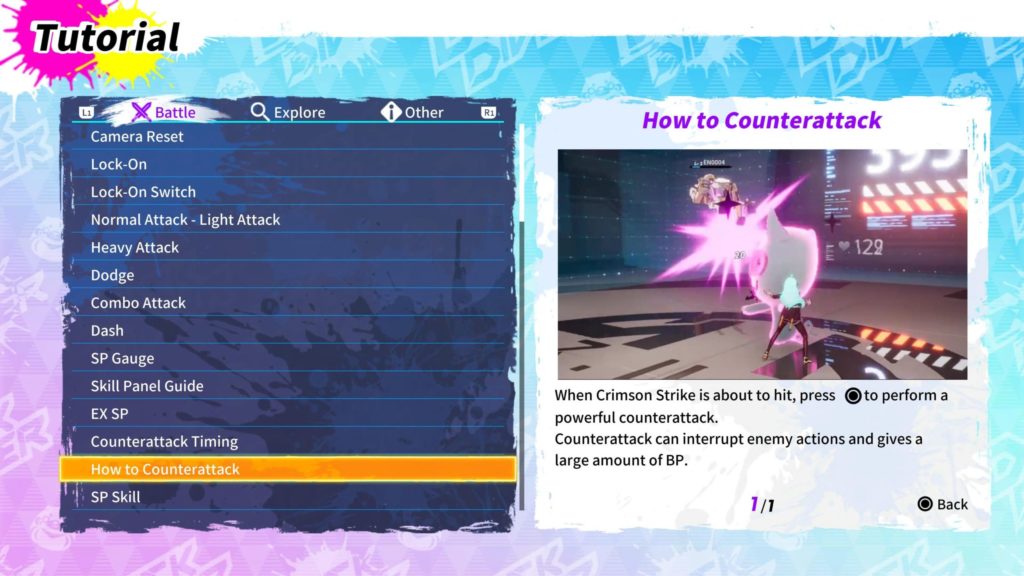
Finally, for combat, there are also items to use. These can range from simple healing items to instant battle points, and skill points for the various abilities you use.
Lastly, the audio was also excellent; In-game battle music was funky and exciting, matching perfectly with the scene or battles you were having. Battle effects were also excellent as each hit felt like it had some amount of weight behind it, even though technically they didn’t.
The voice acting unfortunately was only in Chinese or Japanese, and while this doesn’t normally bother me, some interactions aren’t translated. For example, when buying something from a street vendor he would reply in Japanese with no subtitles – I have no idea if he was thanking me for my business or telling me I’m an idiot. Details like this matter as it helps with the immersion.
The other time the language barrier became an issue is that sometimes you are in the middle of doing something, be it exploring or combat, and having to avert my eyes down to where the text in English was broke me away from the experience. Many times, especially while exploring, I simply stopped while they talked, then carried on.
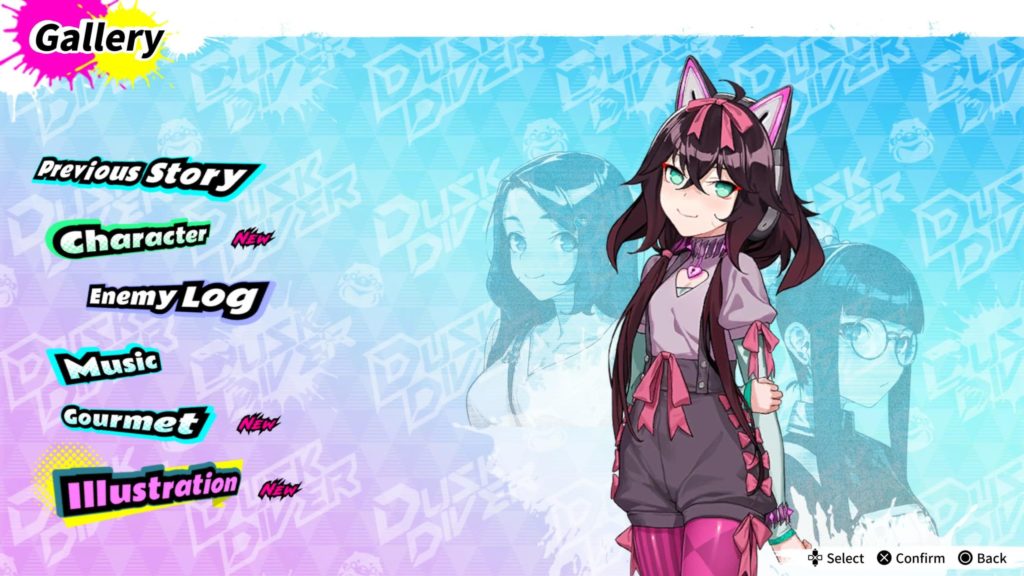
Summary
With a visual style more akin to a big-budget anime, and a hub world doing its best Yakuza impression, the Dusk Diver series is quickly learning what makes a game interesting to play.
The story, although it ends up being quite good, was most certainly lost on me for a large portion of the game, simply because the game expects you to have played the first game and already be up to speed. However, after a rough start, the game doesn’t make it too hard to figure out what’s going on with its excellent presentation, and it’s very entertaining due to the great cast of diverse and likeable characters.
The combat will also divide opinions, as to really get the most out of it, you have to learn the move set of the players and the weaknesses of the enemies. If you don’t, the temptation is just to button mash and become bored. If you do invest time to read and learn these aspects, the combat becomes elegant.

